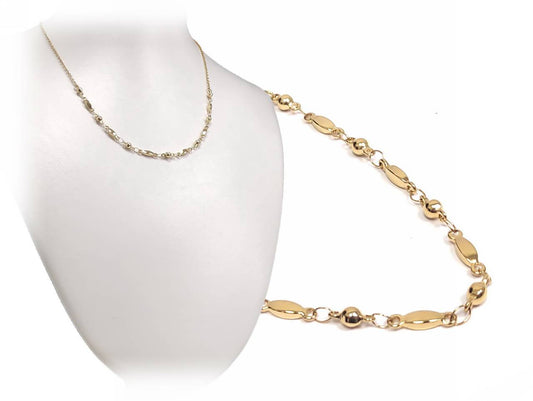Throughout human history, fashion and trends in accessories and jewelry have had and continue to play an important role in our culture. From ancient times to today, women wear accessories and jewelry to show their personality and style, and the trends of these accessories have evolved over time.
During ancient times, women wore jewelry and accessories to show their social status and rich heritage. In ancient Egypt, jewelry was extremely important to women and they often wore precious stones such as emeralds and elaborate gold necklaces. In ancient Rome, women wore gold and silver earrings, bracelets and necklaces. Accessories and jewelry were an important symbol of Greek and Roman cultural heritage.
During the Middle Ages, women wore just as much precious jewelry as men, some of which included pearls, precious stones, and gold jewelry. In fact, jewelry became one of the most important ways for women to express themselves and show their social status and economic well-being.
During the Renaissance, women began to wear more subtle jewelry and jewelry designed to highlight their natural beauty.
In the late 19th century and early 20th century, women began to wear more and more colorful jewelry. This jewelry included rings, bracelets and necklaces with pearls, precious stones, as well as jewelry with striking designs and colors. This era also marked the industry's entry into the jewelry space, which enabled designers to mass-produce jewelry, thus ensuring affordable options for the general public.
During the 1920s, the fashion for "flappers" had a great influence on jewelry. Women belonging to this movement wore jewelry that was more simple, minimalist and with a hint of men's fashion. This meant that the jewelry was made of simple materials, such as copper and silver, while the lines and designs were simple and geometric.
During the 1930s, fashion became more feminine and the use of more and larger jewelry was particularly popular. Necklaces and bracelets were usually large and impressive, while rings and earrings were often elegant and subtle. The use of precious stones such as diamonds, emeralds and sapphires was equally popular and women began to seek more rare and exclusive jewelry.
During the 1940s, fashion changed as World War II had a profound impact on society and fashion. Women responded to these changes by wearing simpler jewelry, such as silver and gold necklaces and bracelets, as well as earrings of simple design. These jewels were usually worn in combination with the simple and practical looks of the time.
Discover our collection of accessories at monoesy.gr
During the 1950s, fashion became more feminine again and women began to wear more and more subtle jewelry. Necklaces, bracelets and earrings were of simple design, while rings were usually worn in larger sizes. The materials used were usually silver or gold and were often combined with stones or pearls. Women often wore jewelry that matched their attire, and jewelry was often an important part of their appearance.
During the 1960s, fashion became more eccentric and experimental. Women began to wear bolder jewelry, often made of plastic and other unusual materials. Necklaces and bracelets were usually large and impressive, while earrings were often very large and unusually shaped.
During the 1970s, fashion became more natural and free. Women began to wear jewelry made from natural materials such as wood, amber as well as metals such as copper. Necklaces and bracelets were thicker and usually worn together, while earrings were larger and more eccentric.
In the 1980s, jewelry fashion became more eccentric and upgraded with the use of more expensive materials and metals, such as precious stones and gold and silver. Necklaces and bracelets were also more striking and bold, often decorated with gems and crystals. The jewelry fashion of the 1980s was definitely one of the wackiest and most eye-catching of the 20th century.
During the 1990s, jewelry fashion became more minimal and subtle. Women wore more silver and metal jewelry with simpler designs. Necklaces and bracelets were thin and simple, while earrings were usually small and subtle. The jewelry fashion of the 1990s was more simple and everyday, reflecting the desire for more functionality and simplicity in everyday life. In addition, they often wore jewelry with symbolism, such as chokers (necklaces worn around the neck and often with a small element or symbol), which were popular in the grunge and punk movements. Also, the 1990s saw an increase in the popularity of piercings, and the jewelry trend was influenced by this, with more earrings and accessories in the style of piercings.
The accessories that stood out in the 2000s were big hoops, eye-catching ribbons and long chains. The jewelry fashion of the 2000s was more extreme and eccentric, with the appearance of statement pieces that stood out and grabbed attention. Bracelets and necklaces were large and impressive, while chains and necklaces with the word "love" or "peace" were very popular.
In recent years, jewelry fashion has evolved into a more refined and elegant direction. Women wear more gold and white gold jewelry, with subtle designs and clean lines. Necklaces and bracelets are thin and subtle, while earrings are tiny and usually worn in pairs. The trend towards simplicity and elegance continues in jewelry fashion, with minimal pieces being particularly popular and sought after.
However, what is certain is that fashion trends change constantly like life, it's a cycle! At monoesy.gr you will always find the most modern and stylish accessories to highlight your outfit!





